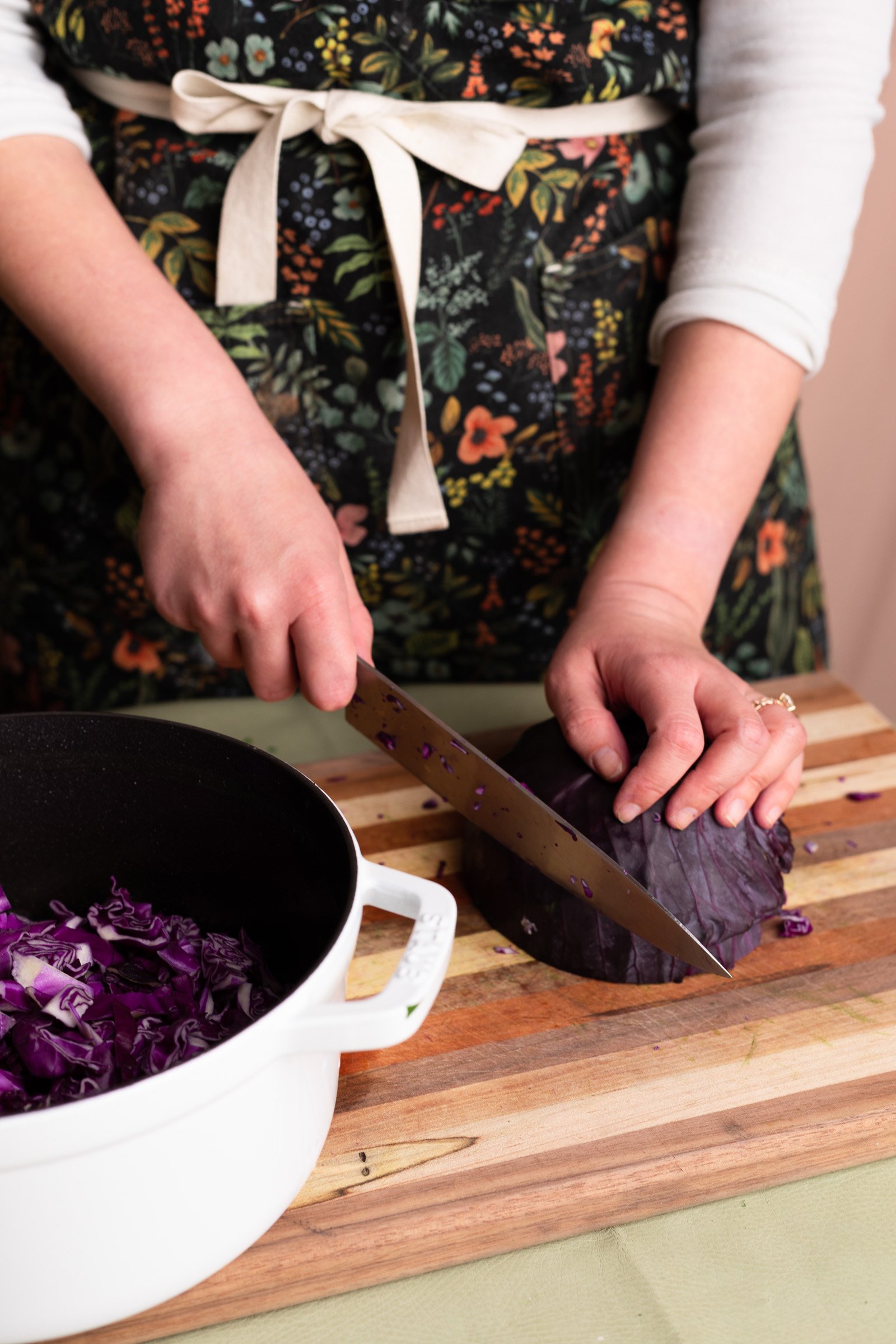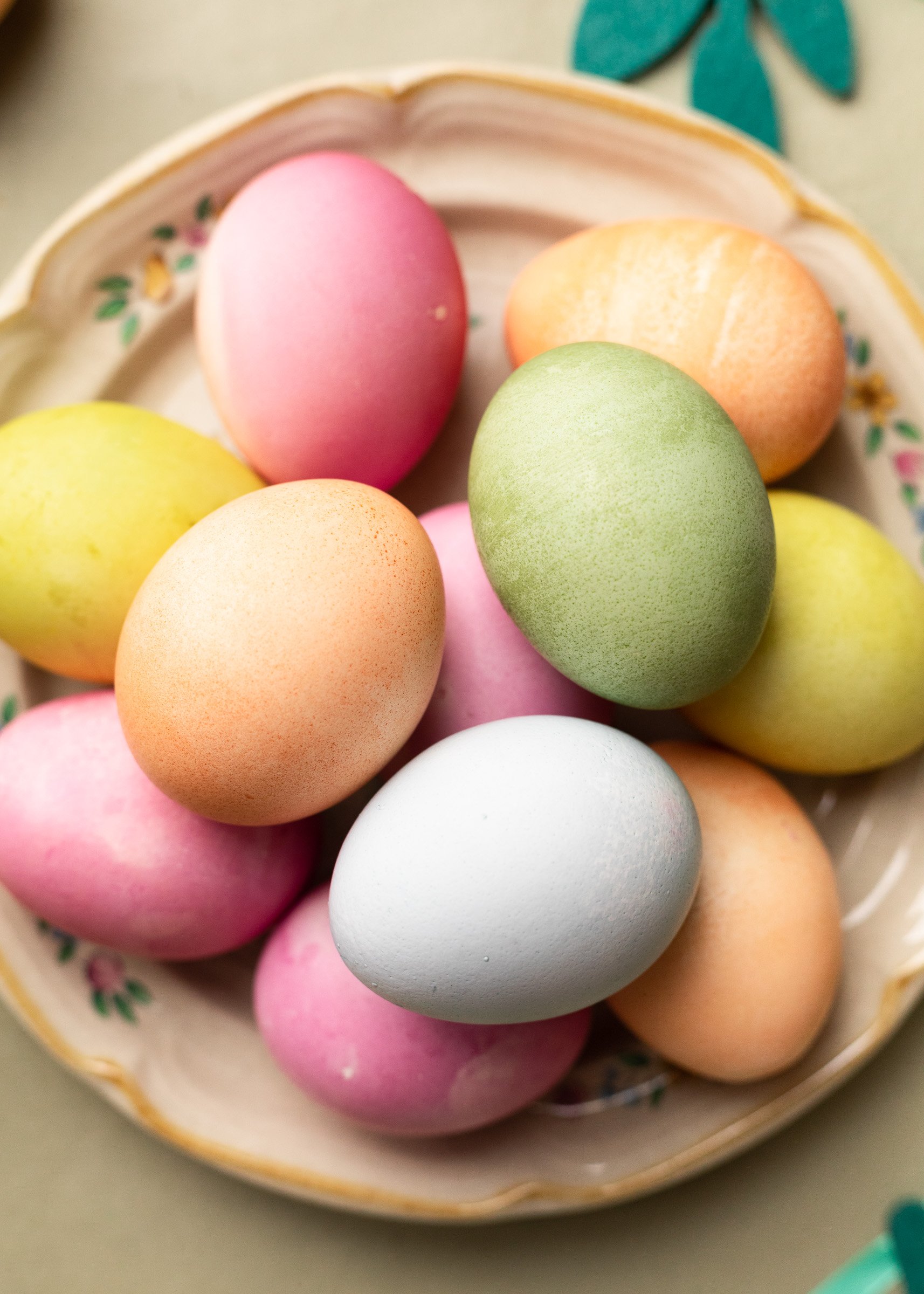Transforming everyday eggs into beautiful, colorful decorations has been an Easter tradition for decades. Eggs are a symbol of rebirth and fertility, making them the perfect object to celebrate the holiday. What you may not know is that your kitchen is full of natural dyes. Simple foods like onions, cabbage, and other vegetables provide gorgeous colors in an earth-friendly way! It’s a pretty simple process of bringing the ingredients to a boil and then soaking the eggs in the colored liquid. That said, keep in mind that this natural process could allow different variations of color depending on how concentrated the dye is!
Here’s what you need!
1 head of purple cabbage
2 lb. bag of yellow onions
2 lb. bag of red onions
2 bunches of beets (about 6 medium-sized beets)
Baking soda
1 dozen boiled white eggs (or more!)
Here’s what you do!
Peel the outermost dry layers of the yellow onions. Using a 2:1 ratio of water to plant matter (1 cup of water to 1 cup of plant matter), add onion skins and water to a pot and bring to a boil. Once boiling, reduce heat to low and simmer for up to an hour. Pour out the contents of the pot through a mesh strainer or cheesecloth into a large bowl. Once strained, pour the remaining liquid into a storage container or mason jar. Once the liquid is at room temperature, add boiled eggs and let sit for 30 minutes to 1 hour. Your egg should be an orange color!
Chop purple cabbage into fine pieces. Using a 1:1 ratio of water to plant matter (1 cup of water to 1 cup of plant matter), add chopped cabbage and water to a pot and bring to a boil. Once boiling, reduce heat to low and simmer for up to an hour. Pour out the contents of the pot through a mesh strainer or cheesecloth into a large bowl. Once strained, pour the remaining liquid into a storage container or mason jar. Once the liquid is at room temperature, add boiled eggs and let sit for 30 minutes to 1 hour. Your egg should be close to a light blue color!
Peel the outermost dry layers of the red onions. Using a 2:1 ratio of water to plant matter (1 cup of water to 1 cup of plant matter), add onion skins and water to a pot and bring to a boil. Once boiling, reduce heat to low and simmer for up to an hour. Pour out the contents of the pot through a mesh strainer or cheesecloth into a large bowl. Once strained, pour the remaining liquid into a storage container or mason jar. Once the liquid is at room temperature, add boiled eggs and let sit for 30 minutes to 1 hour. Your egg should be a yellow color!
Chop beets into small pieces. Using a 2:1 ratio of water to plant matter (1 cup of water to 1 cup of plant matter), add beets and water to a pot and bring to a boil. Once boiling, reduce heat to low and simmer for up to an hour. Pour out the contents of the pot through a mesh strainer or cheesecloth into a large bowl. Once strained, pour the remaining liquid into a storage container or mason jar. Once the liquid is at room temperature, add boiled eggs and let sit for 30 minutes to 1 hour. Your egg should be a pink color!
Tips to keep in mind!
Add 1/4 teaspoon at a time of baking soda to a dye to experiment with changing the hue of each dye.
You can create new colors by mixing dyes together in equal parts, such as mixing the red onion and purple cabbage to make green!
Practice patience. If at first, you do not see much color on the eggs, let the eggs sit longer in the dye.
If the dye was made with too much water, then the dye will be lighter and take longer to appear on the eggs. When making the dye itself, it’s always better to put a little less water in the pot than too much, so the dye is not too thin.


